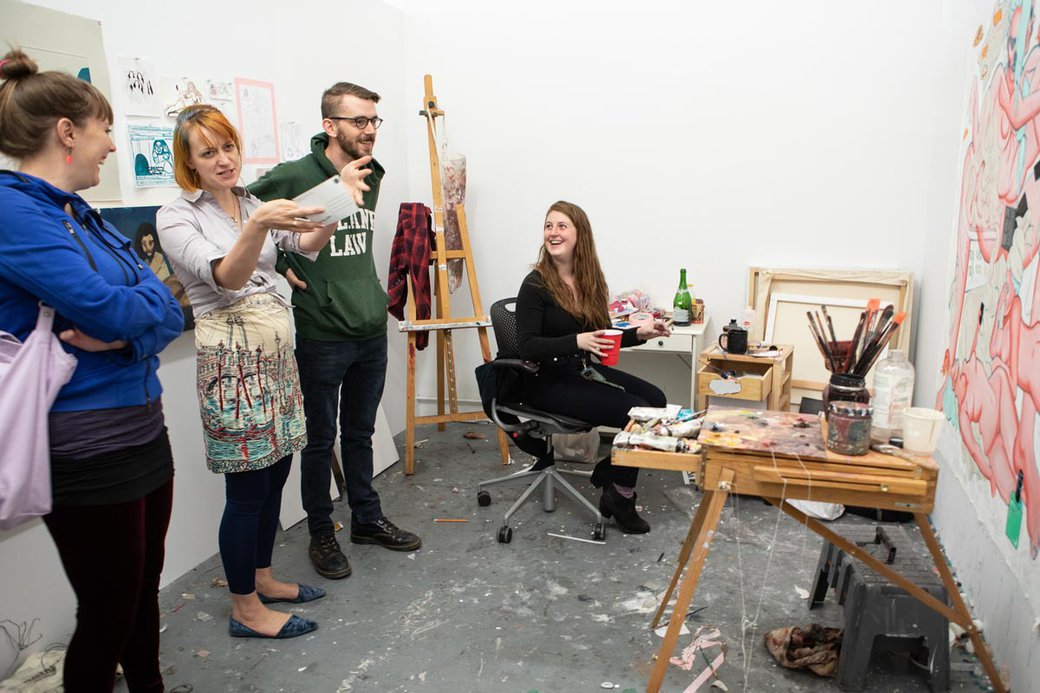
Learning Outcomes
These defined objectives measure educational achievement and are woven into every aspect of the CCA student experience. This is how we uniquely build the skills necessary to thrive as 21st century artists, designers, and writers.
Overview
We strive for student success

Developing a well-rounded creative life
California College of the Arts educates students to shape culture through the practice and critical study of design, architecture, fine arts, and writing. Through coursework rooted in the many facets of a studio practice, a rigorous academic curriculum, and enriching co-curricular experiences, students prepare for a lifetime creating work that matters.
This preparation culminates in graduates whose creative practices demonstrate the perceptual acuity, conceptual understanding, and technical facility sufficient for them to begin work on a professional level.
Outcomes
To achieve and demonstrate knowledge
Undergraduate collegewide learning outcomes
In addition to the outcomes below, which are vital components of any undergraduate education at the college, each academic program addresses discipline-specific concepts, techniques, and learning outcomes in depth.
Critical thinking
Students examine issues, ideas, artifacts, and events in order to generate and evaluate assertions and conclusions. View rubric.
Written communication
Students can effectively present their ideas and express themselves in writing for a variety of purposes to both professional and academic audiences. Students can read a range of texts in order to extract and construct meaning. View rubric.
Oral communication
Students can speak clearly and effectively for multiple purposes and audiences. Students can prepare a purposeful oral presentation designed to inform, convince, or foster understanding. View rubric.
Information literacy
Students can identify, locate, collect, evaluate, and effectively and responsibly mobilize information for the task at hand. View rubric.
Quantitative reasoning
Students can reason and solve quantitative problems from a wide array of authentic contexts and everyday life situations. Students can understand, analyze, create, and communicate arguments supported by quantitative evidence.
Visual communication
Students can develop their ideas and make work that expresses themselves in their chosen discipline(s) with the conceptual, material, and technological skills expected for entry into professional practice.
Creative thinking
Students combine or synthesize existing ideas, images, or expertise to express themselves in original/innovative ways. Students take strategic risks in their creative practice in order to gain from the experience.
Visual literacy
Students can apply their knowledge of historical and contemporary art and design practices to decipher images, artifacts, and environments.
Cultural literacy
Students recognize the cultural significance of a broad range of art and design practices, and how historical trajectories inform contemporary practices. Students recognize the contributions of art forms (literary, performing, etc.) other than the visual arts and design. Students demonstrate understanding of concepts drawn from the study of critical theory, philosophy, social science, technology, and/or history.
Professional practice
Students identify and prepare for appropriate professional pathways by engaging with program faculty and available career development resources.
Diversity
Students can engage with diverse and global perspectives, histories, and values, including the cultural relevance of larger systems of power and privilege. View rubric.
Social responsibility
Students consider the impact of their making practices and disciplines on civic and cultural life.
Sustainability
Students demonstrate an understanding of sustainability as a global, social, economic, environmental, and practice-based concern.
Interdisciplinarity
Students adapt and apply skills, ideas, or methodologies gained in one situation/activity/discipline to new situations/activities/disciplines.
Collaboration
Students work cooperatively to achieve shared goals incorporating multiple group members’ perspectives.
Find your creative community at CCA